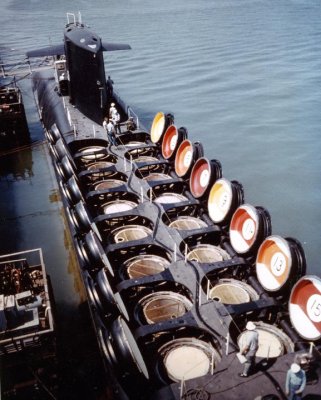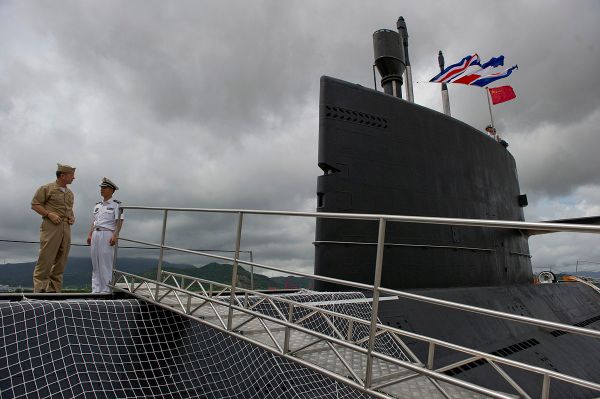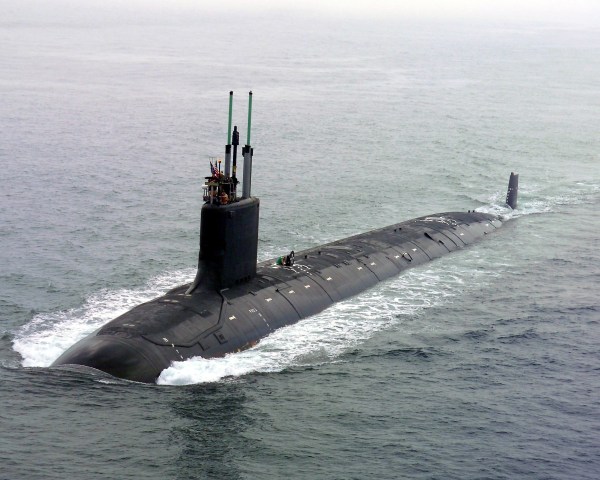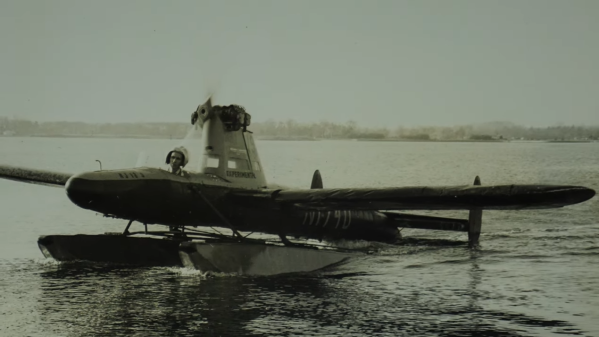Begun, the Spectrum Wars have. First, it was AM radio getting the shaft (last item) and being yanked out of cars for the supposed impossibility of peaceful coexistence with rolling broadband EMI generators EVs. That battle has gone back and forth for the last year or two here in the US, with lawmakers even getting involved at one point (first item) by threatening legislation to make terrestrial AM radio available in every car sold. We’re honestly not sure where it stands now in the US, but now the Swiss seem to be entering the fray a little up the dial by turning off all their analog FM broadcasts at the end of the year. This doesn’t seem to be related to interference — after all, no static at all — but more from the standpoint of reclaiming spectrum that’s no longer turning a profit. There are apparently very few analog FM receivers in use in Switzerland anymore, with everyone having switched to DAB+ or streaming to get their music fix, and keeping FM transmitters on the air isn’t cheap, so the numbers are just stacked against the analog stations. It’s hard to say if this is a portent of things to come in other parts of the world, but it certainly doesn’t bode well for the overall health of terrestrial broadcasting. “First they came for AM radio, and I did nothing because I’m not old enough to listen to AM radio. But then they came for analog FM radio, and when I lost my album-oriented classic rock station, I realized that I’m actually old enough for AM.”
submarine46 Articles
Chinese Subs May Be Propelled Silently By Lasers
If sharks with lasers on their heads weren’t bad enough, now China is working on submarines with lasers on their butts. At least, that’s what this report in the South China Morning Post claims, anyway.
According to the report, two-megawatt lasers are directed through fiber-optic cables on the surface of the submarine, vaporizing seawater and creating super-cavitation bubbles, which reduce drag on the submarine. The report describes it as an “underwater fiber laser-induced plasma detonation wave propulsion” system and claims that the system could generate up to 70,000 newtons of thrust, more than one of the turbofan engines on a 747.
The report (this proxy can get around the paywall) claims that the key to the system are the tiny metal spheres that direct the force of the cavitation implosion to propel the submarine. Similar to a magnetohydrodynamic drive (MHD), there’s no moving parts to make noise. Such a technology has the potential to make China’s submarines far harder to detect.
Looking for more details, we traced the report back to the original paper written by several people at Harbin Engineering University, entitled “Study on nanosecond pulse laser propulsion microspheres based on a tapered optical fiber in water environment“, but it’s still a pre-print. If you can get access to the full paper, feel free to chime in — we’d love to know if this seems like a real prospect or just exaggerated reporting by the local propaganda media.
[Image via Wikimedia Commons]
China May Have A New Submarine Tracking Technology
Submarines have always been about stealth; that’s always been the whole point of putting them underwater. Tracking them can be difficult, even to this day, but China may have a new technique to help in this endeavour, as reported by the South China Morning Post.

The news comes from a study published in a Chinese journal, regarding detection of the most advanced American submarines. The stealthiest examples use all kinds of sophisticated systems to damp vibrations and reduce acoustic signatures to make detection as hard as possible. However, a new type of magnetic detector could change all that.
A research team used computer simulations to determine whether nuclear-powered submarines could be detected via the bubbles produced when cruising at high speed underwater. When these bubbles inevitably collapse, it can apparently produce a detectable signal that is orders of magnitude higher than the sensitivity of the best magnetic anomaly detectors. The signal is found on the order of 34.19 to 49.94 Hz, deep in the ELF range, according to researchers.
This could yet create another arms race, as submarine designers begin designing vessels to reduce bubble shedding at speed. Or, for all we know, this is already a well-known principle in the high-stakes world of submarine surveillance and combat. If you’re in the know, please don’t reveal any classified information in the comments section. It’s not worth your job or ours! If you recreate such a detector at home in a non-treasonous manner, though, don’t hesitate to let us know!
Flying Submarine Documentary Is A Story Of Defied Assumptions
Donald Reid had a passion for applying himself to challenging problems, and in many ways his life’s work was that of developing a prototype submersible aircraft — or flying submarine — for which his son Bruce was a test pilot. [Jesse Moody] brought to our attention a fantastic documentary he created (with a short teaser trailer here) in which he interviews Bruce, and in the process teaches us all about a story that spanned decades and formed an important part of aviation history. Bruce experienced his share of hair-raising moments while testing the craft, but still has all of his fingers and limbs. Still, in his own words, “you wouldn’t be doing that kind of testing today!”
In many ways, the story revolves around defying assumptions. Without context, a “flying submarine” project might sound like a lone kook’s obsession, but Donald Reid was nothing of the sort. He was a brilliant engineer who was able solve problems by applying his skill and intellect with a laser-like focus. And it turns out that getting a submerged vehicle to successfully transition from waterbound craft to airborne is a source of numerous and novel problems that were not trivial to solve. In fact, these problems needed to be solved in order to develop the Tomahawk cruise missile, which is launched by submarine. And that brings us to the lawsuit that bookended it all.
Continue reading “Flying Submarine Documentary Is A Story Of Defied Assumptions”
Take A Ride In The Bathysphere
[Tom Scott] has traveled the world to see interesting things. So when he’s impressed by a DIY project, we sit up and listen. In this case, he’s visiting the Bathysphere, a project created by a couple of passionate hobbyists in Italy. The project is housed at Explorandia, which based on google translate, sounds like a pretty epic hackerspace.
The Bathysphere project itself is a simulation of a submarine. Sounds simple, but this project is anything but. There are no VR goggles involved. Budding captains who are up for the challenge find themselves inside the cockpit of a mini-submarine. The sub itself is on a DIY motion platform. Strong electric motors move the system causing riders to feel like they are truly underwater. Inside the cockpit, the detail is amazing. All sorts of switches, lights, and greebles make for a realistic experience. An electronic voice provides the ship status, and let’s the crew know of any emergencies. (Spoiler alert — there will be emergencies!)
The real gem is how this simulation operates. A Logitec webcam is mounted on an XY gantry. This camera then is dipped underwater in a small pond. Video from the camera is sent to a large monitor which serves as the sub’s window. It’s all very 1960’s simulator tech, but the effect works. The subtle movements of the simulator platform really make the users feel like they are 20,000 leagues under the sea.
Check out the video after the break for more info!
Navy Program PUMPs Up Hopes For Magnetic Propulsion
The “caterpillar drive” in The Hunt for Red October allowed the sub to travel virtually undetected through the ocean, but real examples of magnetohydrodynamic drives (MHDs) are rare. The US Navy’s recently announced Principles of Undersea Magnetohydrodynamic Pumps (PUMP) intends to jump-start the technology for a new era.
Dating back to the 1960s, research on MHDs has been stymied by lower efficiencies when compared with driving a propeller from the same power source. In 1992 the Japanese Yamato-1 prototype, pictured at the top of the page, was able to hit a blistering 6.6 knots (that’s 12 kph or 7.4 mph for you landlubbers) with a 4 Tesla liquid helium-cooled MHD. Recent advances courtesy of fusion research have resulted in magnets capable of generating fields up to 20 Telsa, which should provide a considerable performance boost.
The new PUMP program will endeavor to find solutions for more robust electrode materials that can survive the high currents, magnetic fields, and seawater in a marine environment. If successful, ships using the technology would be both sneakier and more environmentally friendly. While you just missed the Proposers Day, there is more information about getting involved in the project here.
Building A Homemade Ambient Pressure Submarine
About two years ago, [Hyperspace Pirate] set to work on building his own two-seater submarine, because who doesn’t want to have a submarine when you have just moved to Florida? In the linked video (also attached below), he describes the reasoning behind the submarine design. Rather than going with a fully sealed submarine with ambient pressure inside and a hull that resists the crushing forces from the water, he opted to go for a semi-wet ambient pressure design.
What this essentially entails is a fancy equivalent of an old-school diving bell: much as the name suggests, these are sealed except for the bottom, which allows for water to enter and thus equalize the pressure. Although this has the distinct disadvantage of being not dry inside (hence the semi-wet), it does mean that going for a dive is as easy as letting the water in via the bottom hole, and to resurface only a small amount of air injected into two ballast tanks and a pump are all that are required.
So far this submarine has survived a few test runs, which uncovered a number of issues, but diving and resurfacing seems to be going pretty smoothly now, which is definitely a massive plus with a submarine.
(Thanks to [Drew] for the tip!)
Continue reading “Building A Homemade Ambient Pressure Submarine”


















